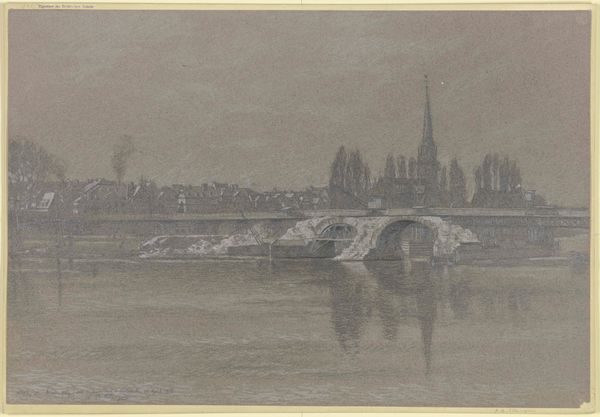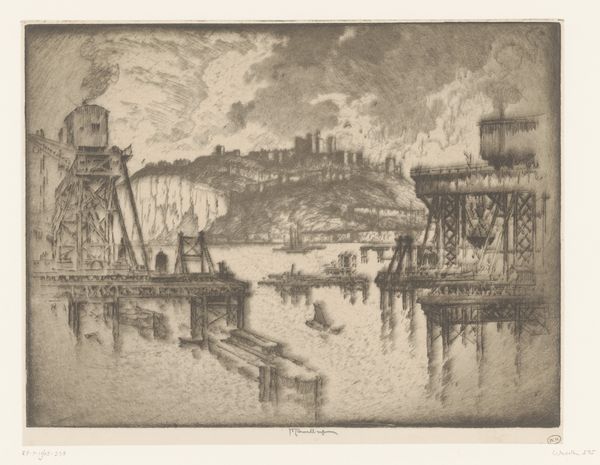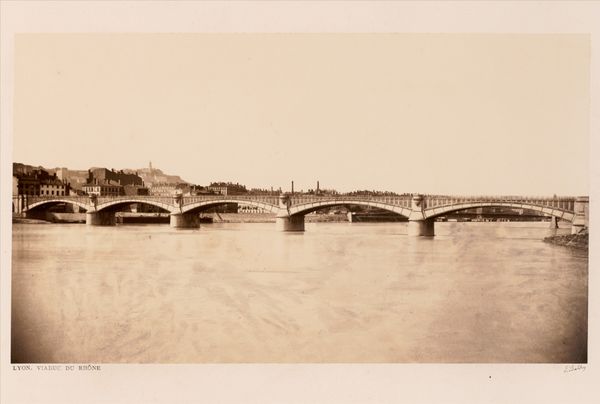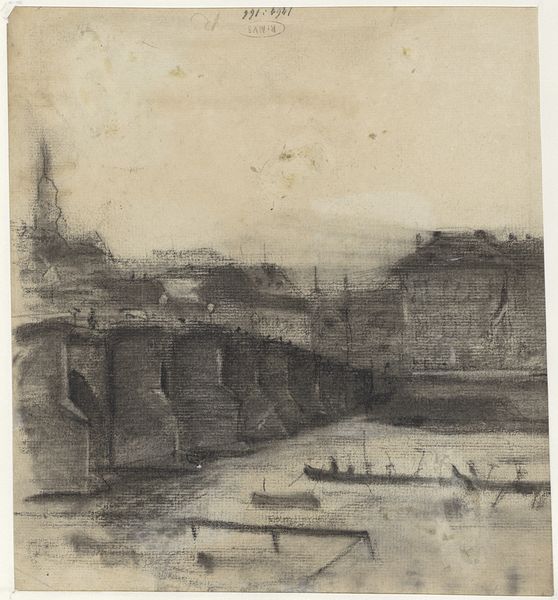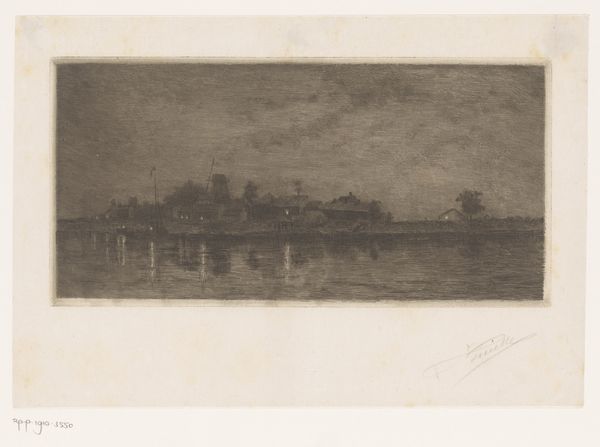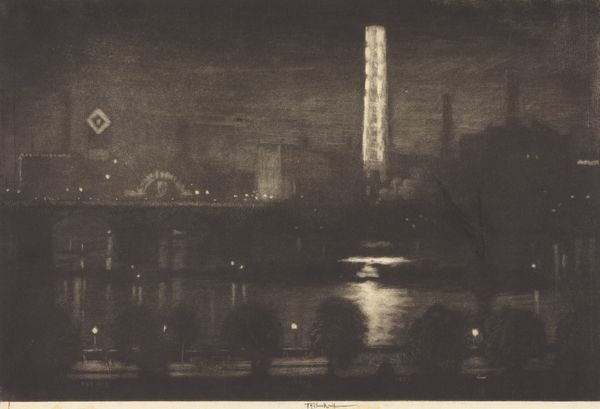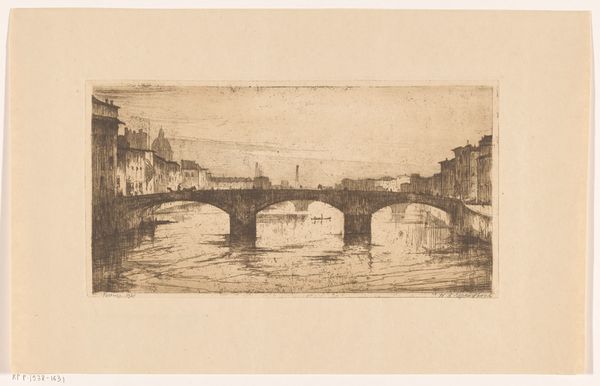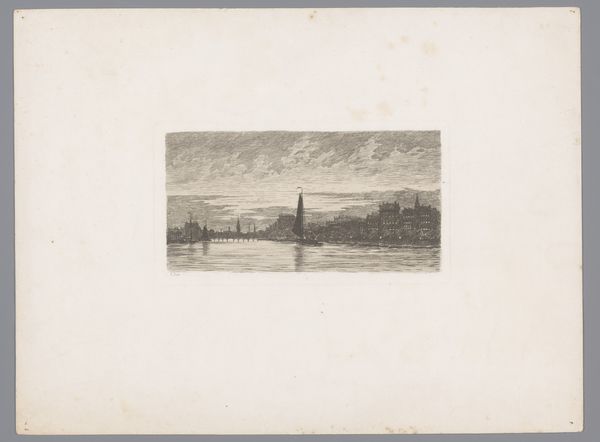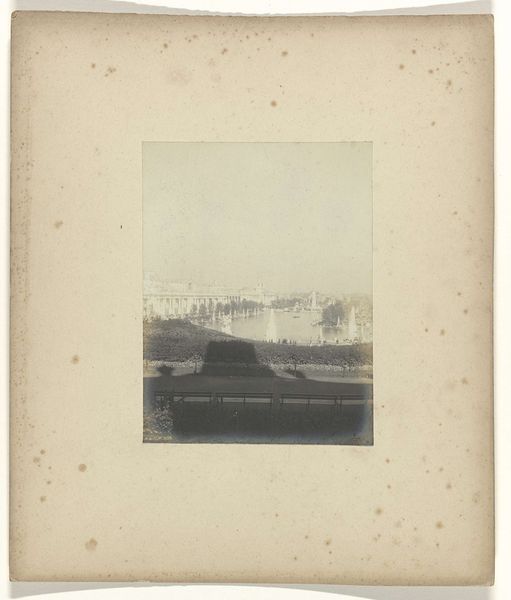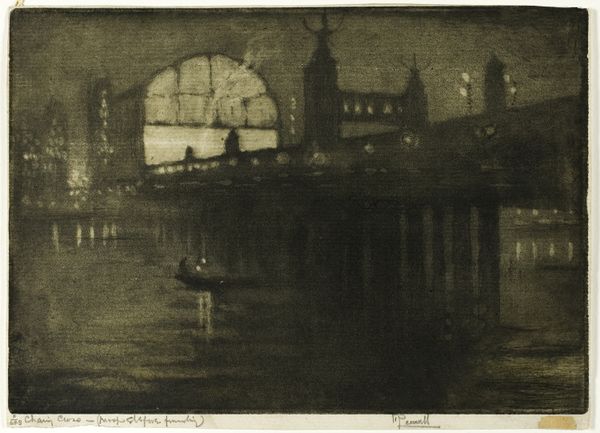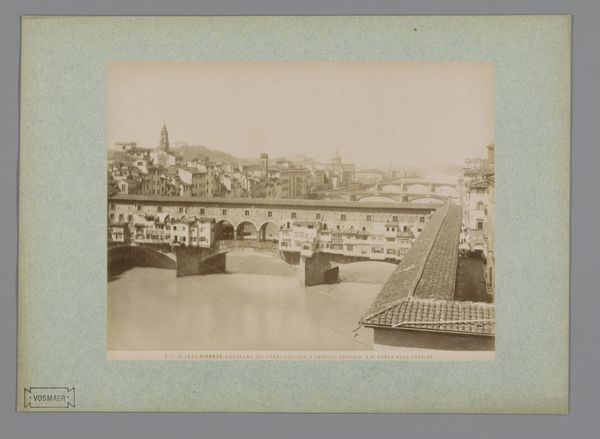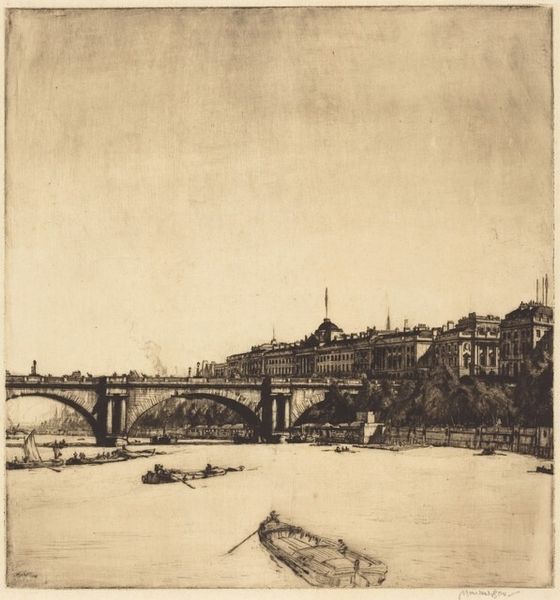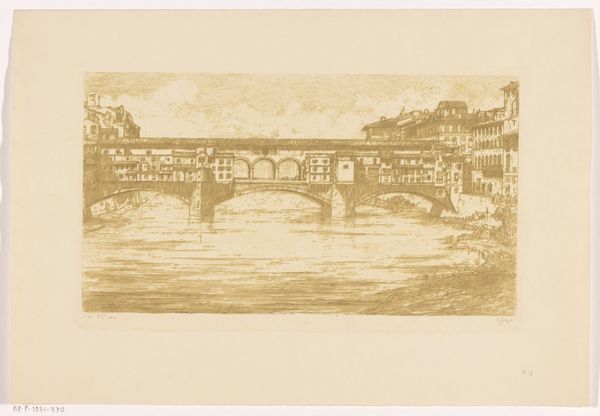
Dimensions: 12 15/16 x 19 5/8 in. (32.86 x 49.85 cm) (plate)17 1/4 x 24 3/16 in. (43.82 x 61.44 cm) (sheet)
Copyright: Public Domain
Curator: Eugène Delâtre's etching, "Le pont Solferino," likely created between 1898 and 1900, offers a mesmerizing cityscape through the lens of Impressionism, now residing here at the Minneapolis Institute of Art. Editor: Ah, Paris at night. I can almost smell the damp stone and hear the gentle lapping of the Seine. It’s like a dream half-remembered, hazy and soft. The reflection of lights shimmering in the water. Curator: Precisely. Delâtre masterfully employs charcoal and etching to generate depth, notably structuring the image around a central bridge viewed obliquely, allowing us access to a landscape almost devoid of strong contour lines. This compositional arrangement gives the etching its dreamlike feeling. Editor: There is an ambiguity here. It doesn't quite sit still for me. I wonder, did Delâtre intentionally soften those contours to invite us to finish the picture with our own imaginations? Curator: Delâtre's adept use of the etching process gives it the structure needed to achieve this effect, notably the rendering of light. Observe how individual pointillist light elements interact in an interplay, giving rhythm to an otherwise dark tonality. The etching truly exploits light's dynamic potential. Editor: True, the lights punctuate the scene—not with drama but with delicate suggestion. They hint at stories unfolding in the shadows—lovers meeting, secrets exchanged under the arches. It makes you wish you were there. It’s that kind of evocative, quiet peace, isn't it? Curator: And that emotional appeal links us to the tenets of Impressionism and tonalism, yet structurally it anticipates the modern concerns of spatial compression. Editor: So in this modest little etching, Delâtre invites us on a journey, not just to Paris, but into a space where memory and imagination blur, where the structures themselves become the foundation for stories. Curator: I am glad that we found so many different ideas to talk about by paying attention to the composition as much as the affective elements of the etching.
Comments
No comments
Be the first to comment and join the conversation on the ultimate creative platform.
